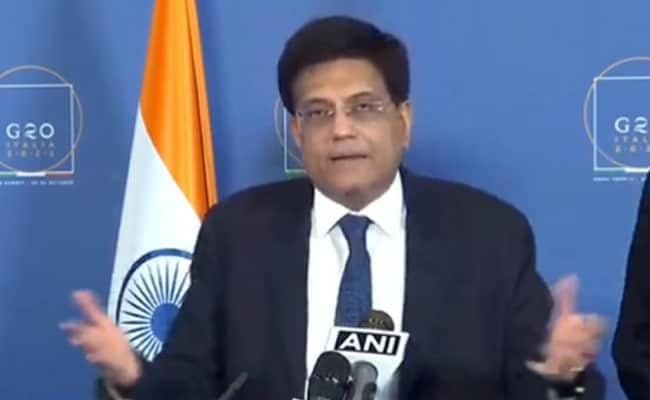India Says "Need To Be In Nuclear Group NSG", Links It To Climate Goals
New Delhi:
India made a renewed push for its membership to the coveted Nuclear Suppliers Group or NSG ahead of the COP26 climate summit, underlining that its climate and development goals are tied with its entry into the grouping.
The NSG is a 48-member group which regulates global nuclear commerce.
"As I said this is something that needs to be determined based on the type of technologies that would be available for that climate transition. For eg, for our base load to be replaced from coal to may be nuclear, we will need large amounts of capital for setting up nuclear plants both to replace our current demand and for the future demand that our development imperative requires," said Piyush Goyal, India's Sherpa to the G20 Summit.
Admission of new members to the premier group is done through consensus. India had first applied for membership in May 2016. Even though India has the backing of the majority of the group's members, China has been blocking its entry into the bloc.
"Secondly, we will need to be members the Nuclear Suppliers Group (NSG) to ensure adequate availability of raw materials for nuclear supply and several other associated concerns around cost of power. So it's going to be a holistic solution which will emerge through dialogue, discussion and the collective effort of all the countries," Piyush Goyal added.
India and Pakistan are not signatories to the NPT. After India requested to be included, Pakistan too applied for the NSG membership in 2016.
India has asked developed nations that have "enjoyed the fruits of energy" to reach net zero faster so that emerging economies use some "carbon space" to drive growth. 'Net zero emissions' refers to achieving an overall balance between greenhouse gas emissions produced and greenhouse gas emissions taken out of the atmosphere.
China maintains that there would be no discussion on India's entry into the NSG before reaching a specific plan on non-NPT members' participation in the elite grouping. It has declined to give a timeline to reach a consensus among member states on this issue.
India's focus at the COP26 summit will be on the country's "ambitious" Nationally Determined Contribution (NDC) goals for the post-2020 period under the Paris Agreement.
"India is among the top countries in the world in terms of installed renewable energy, wind and solar energy capacity. At the World Leaders' Summit, I will share India's excellent track record on climate action and our achievements," PM Modi said in a statement ahead of the summit.
In August a bombshell "code red" report from the world's top climate science body warned that Earth's average temperature will hit the 1.5 degree Celsius threshold around 2030, a decade earlier than projected only three years ago.
India made a renewed push for its membership to the coveted Nuclear Suppliers Group or NSG ahead of the COP26 climate summit, underlining that its climate and development goals are tied with its entry into the grouping.

www.ndtv.com





